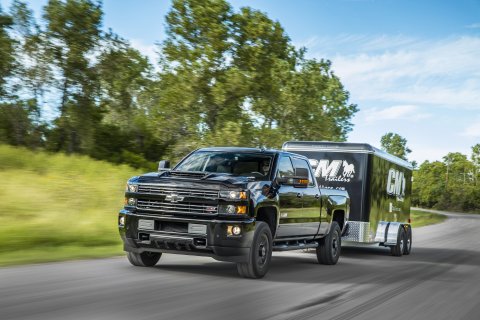The carmaker conducted a review to ensure that it wouldn’t face fines and government actions.
General Motors is fending off another class-action lawsuit, filed last week by Seattle firm Hagens Berman Sobol Shapiro, alleging that the carmaker cheated on emissions tests for its large Duramax diesel engines.
The law firm also recently filed a lawsuit against GM alleging cheating for the diesel engines in the company’s Cruze vehicles — motors much smaller than the Duramax engines that GM uses in big Chevy and GMC trucks.
The specter of Volkswagen’s “defeat device” scandal for its own emission-cheating efforts was immediately raised, so following the VW crisis GM subjected all of its diesel engines to a review to determine whether they were compliant with emissions-testing protocols, the automaker explained. The carmaker concluded that they were.
In getting its emissions systems approved by both the EPA and the California Air Resources Board, GM also explained that it carefully described the how emissions treatments functioned for the Duramax engines.
The VW engines and the GM motors involved in the most recent lawsuit are completely different, both in terms of size and how emissions are treated. The small-displacement VW engines deployed a “trap” to capture nitric oxide (NOx), but that seemingly innovative technology didn’t work as advertised, leading VW engineers to install software designed to defeat emissions tests.
GM’s large-displacement diesels use a far more common urea-injection system. In an interesting wrinkle, the defeat device that Hagens Berman Sobol Shapiro alleges GM installed is apparently in operation only under specific circumstances. The New York Times summed it up:
According to the suit, the trucks conform to emissions standards when they are being driven at steady speeds and when outdoor temperatures range from 68 to 86 degrees — the conditions used for some of the emissions testing such trucks undergo.
Absent those conditions, the vehicles emit four to five times the pollutants than are allowed, the suit says. It alleges that GM intentionally programmed the vehicles’ emissions controls to pass emissions tests and to then scale back those controls in real-world conditions to improve power and fuel-economy.
The most prevalent scenario for the alleged device to reduce emissions treatment, therefore, would be under wintertime conditions.
In a statement, GM said: “These claims are baseless and we will vigorously defend ourselves. The Duramax Diesel Chevrolet Silverado and GMC Sierra comply with all US EPA and CARB emissions regulations.”
One of the issues that’s emerged since VW’s crisis — which resulted in billions in fines and settlements for the German automakers and effectively ended its diesel dominance for passenger cars in the US — is that there are several different types of diesel engines, with accordingly different technologies used to treat emissions.
The NOx traps that VW used for small engines were considered a breakthrough, given that they didn’t require the urea-injection system that’s commonplace for large engines. Americans haven’t taken to diesel vehicles in the same way that Europeans have, so VW’s scandal covered only about 500,000 vehicles.
Larger diesel motors are popular, however, on big trucks that are designed to tow heavy payloads, such as boats and horse trailers. GM, Ford, and Fiat Chrysler Automobiles (which is currently being sued by the government for its own alleged diesel-emissions evasions) all sell this type of vehicle and have for years.
Source: GM diesel emissions lawsuit compliant – Business Insider

